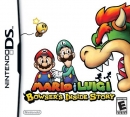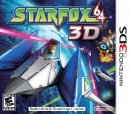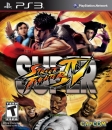Wow almost enough to make me cry..
nastolgia warning!!
http://ds.ign.com/articles/956/956855p1.html
----------------------------------------------------------------------------------------------------------------
February 24, 2009 -

Because I'm so cool and so popular and so knowledgeable about everything Pokemon related,Nintendo is practically begging me to make fun oftalk about every aspect of the Pokemon universe. Part of that involves sending me the theme decks for the recently released Platinum expansion set of thePokemon Trading Card Game. You know the one with the giant alien crawdad on it, and the one with Sonic the Hedgehog's crossdressing cousin on it.
Unfortunately for me, I haven't played the TCG for like eight years now. And as it turns out, every card I have in the box in my garage is no longer tournament legal, putting me at a rather serious disadvantage.
But these new cards, with their freaky new rules, (Pokemon LV.X, WTF?) and double energy types got me reminiscing about the beginnings of the TCG. So I figured I'd cover the first couple years of the Pokemon TCG, back when I played it.
So we're going on a nostalgia trip, kids. And it's one of those ones that's going to make me sound really old, like some sort of Poke-grandpa. I promise I won't say things like "Why, in my day, we only had seven energy types!" or "When I played, we didn't have fancy stadium and support cards, and we had to walk 15 miles in the snow to go to tournaments."
Original Sets
The card game was pretty simple when it first came out. Each player has a 60-card deck full of Pokemon and other cards. Players pitted their Pokemon against each other, taking turns attacking the opponent and trying to wittle down their HP. Once a Pokemon is knocked out, the victor gets a prize card. Get six prize cards, and you win. There were a few card types: Pokemon, the actual cards used to attack and defend. Energy cards, which were used to power up the moves. And Trainer cards, which were used to heal, switch Pokemon, search the deck, and other strategic moves.
They cards also featured artwork on each one, making them collectible as well as playable. It was also rumored, though never proven, that they were laced with narcotics, making the collectible, playable and highly addictive.
Base Set - January 1999
The reason I never had any lunch money in 1999. I spent every cent I earned on booster packs, and spent my lunches playing with my friends. It was incredibly, absurdly dorky, but because Pokemon was so popular, there were at least a dozen guys playing every day, so at least it was social. Demented and sad, but social.

The card was a powerhouse, a nearly unstoppable force. Charizard's attack could KO any other Pokemon in the game except for Chansey (but seriously who uses Chansey? Lame!). And no other Pokemon came close to being as strong, even the ones that should be awesome and were totally lame (I'm looking at you, Mew Two).
Oh sure there were a lot of good Pokemon to be found in the set, and with seven energy types there was a lot of potential strategies. But there were only two strategies that anyone ever seemed to use: Use Charizard to kill everything, or build a deck made specifically to resist Charizard.
The kids were obsessed with him. They would snatch the packs out of the hands of the local Game Keeper's hands, running to the corner of the store and huddling down. Shaking hands would tear open the foil, barely able to keep a grip. And then they would flip through the cards, not caring what the commons or energy card was, knowing that right behind them would be the rare card. The scene played out like a cross between Charlie and the Chocolate Factory and Requiem for a Dream. And the resounding groans of disappointment when the kid only got a Trainer card could be heard throughout the store.
The base set was only out for six months before we were moving on, though. And no sooner had I thought my collection was complete when Wizards of the Coast dropped an expansion pack on us.
Jungle - June 1999
Jungle was the first set where the North American release had extra holographic cards. There are only 48 different cards in the set, but Wizards of the Coast made every rare Pokemon have a holographic variant, increasing the set to 64 and ensuring that kids would give them way more money (because holographic Scyther is so much better than boring old normal Scyther). The plus side to this was that it gave players the chance to use better cards, without the fear of scratching the precious holographic ones. Everyone knows those ones should stay in a binder and never come out.

Sure, it was the only Psychic card in the expansion (Psychic fans got no love for a while), but it seemed to be one that was designed specifically to take down the powerhouses like Charizard. His Pokemon Power prevented any damage over 20 from working, and his attack got incrementally stronger each turn. Of course you had to bring him out late in the game because a simple basic Pokemon could murder him pretty easily.
Fossil - October 1999
Fossil, the second expansion, finally got all the first 150 Pokemon into the game. It's also the smallest English expansion set. Honestly I found the Fossil set to be boring, but maybe that was because it came out right as I realized I was at least four years older than every other kid and that maybe, just maybe I was too old to be in a mall store Pokemon League that gave out actual badges as a reward. Plus I was a little tired of 8-year-olds kicking my butt.
It did have a Ditto card, the first Pokemon card that didn't have an attack at all, just a Pokemon Power that copied the opponent's card.
Base Set 2 - February 2000
It was the base set, with a few Jungle cards mixed in. What a stupid idea. Let's not talk about it. Moving on!
Team Rocket -April 2000
The Team Rocket set was notable for introducing "dark" Pokemon. Since the expansion revolved around the exploits of Team Rocket, the Pokemon in the set were corrupted, and thus "dark." The Japanese translation called them "bad" but that was seen as too mean for American kids (I would have totally used a card called "Bad Pikachu" but whatever!). Of course this made it more confusing when Dark actually became an energy type, and they had to distinguish what the difference was between a Dark Pokemon and a Dark-Type Pokemon. See how much easier it would have been to just call them bad, Wizards of the Coast?
The Rocket set also included the first holographic Trainer and Energy cards, which was supposed to make kids stop complaining so much about getting Trainer cards as their only rare in a booster pack. (For the record, it didn't work. Getting a trainer card still totally sucked, especially when your friend whips out a Dark Blastoise and gloats about it).
Gym Series
So by this point I was pretty much done with Pokemon cards, but due to younger siblings and a local comic shop that held tournaments, I was unable to fully escape it. I actually probably would have kept buying Pokemon Cards for a while, but the Gym series proved way too costly and time consuming to keep me held captive any longer.
Gym Heroes and Gym Challenge August and October 2000
The Gym Series used specialized Pokemon unique to the gym leaders from the game. They were treated as new Pokemon, so Erika's Vileplume could only evolve from Erika's Gloom and Erika's Oddish, not the normal ones. While this expanded the number of different Pokemon a player could have, it also restricted the ability to mix and match.

There's another first for Pokemon cards in the Gym Series as well. The first cards to get censored for American release. Three cards had to have their artwork changed before they were brought to America. One of the cards, Misty's Tears, was redone because the Japanese version showed a nude Misty. Koga's Ninja Trick had to be edited as well, since the omote manji represented on the card holds a rather serious stigma in Western culture, despite the symbol meaning love and mercy, and being a common marker for Buddhist temples in Japan.
Since the release of the Gym Series there have been 33 more expansion packs, with over 3,700 cards, and that's not counting the hundreds of promotional cards given out through special events over the last decade. Using the patented Gears of War 2 measurement system, that's equal to 2.43 sh-- tons.
For people like me that have been out of the loop for years, or for the young kids that I hope aren't reading these inappropriate articles, it's not that hard to get into the game. The rules are simple, and the game is actually pretty balanced (as evidenced by the fact that very few cards have had to be banned from tournament play). And since the official tournament rules cycle out the old expansions, you really only need to focus on the Diamond and Pearl sets. Personally I'm ready to pwn some noobs with the combined forces of scary space shrimp monster and female impersonator hedgehog!
hello how are you.






























































